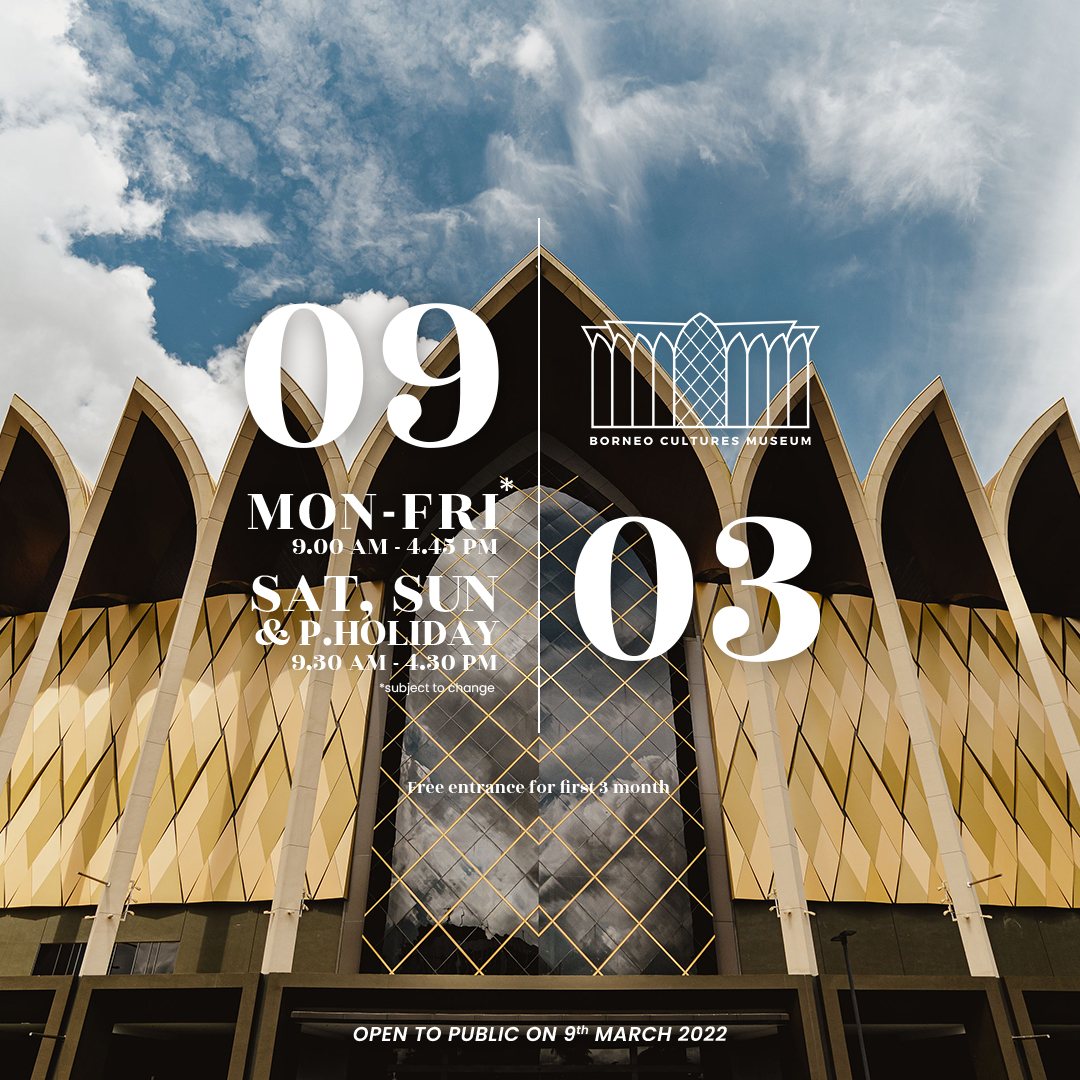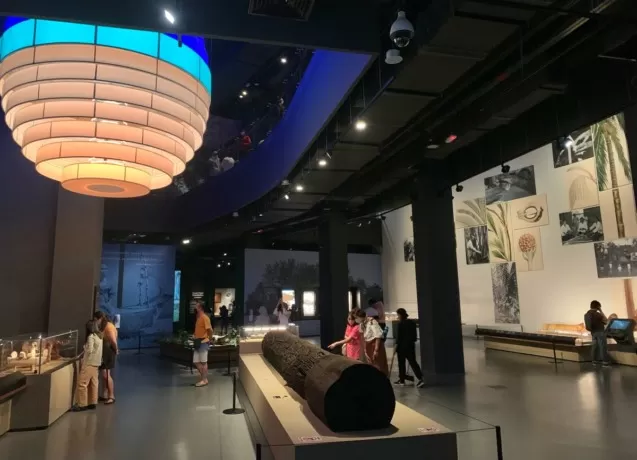Look into Variety: Borneo Cultures Museum Revealed
Look into Variety: Borneo Cultures Museum Revealed
Blog Article
Delve Into the Fascinating Globe of Borneo's Cultural Heritage: A Comprehensive Overview to the Cultures Museum Experience
Submersing oneself in the detailed tapestry of Borneo's social heritage is akin to starting a trip through time and custom. The blend of aboriginal people, conventional handicrafts, exciting performances, and historic narratives housed within the confines of the island's museums supplies a peek right into a globe brimming with extensive heritages and vibrant customs. As visitors traverse via these repositories of culture, they are beckoned to explore a world where past and present intermingle, welcoming reflection on the durability and richness of Borneo's varied heritage.
Indigenous People of Borneo
Borneo is home to over 50 native tribes, each with distinct social techniques and practices that have actually been maintained for generations. Amongst these people are the Iban, known for their elaborate tattoos and conventional longhouses where multiple families reside. The Dayak individuals, an additional popular team, participate in fancy spiritual events and are skilled craftsmens, crafting intricate wood makings and woven fabrics. The Penan tribe, on the other hand, are nomadic hunter-gatherers with a deep connection to the jungle, using blowpipes for hunting and event wild plants for nourishment.
These aboriginal tribes play a vital role in preserving Borneo's abundant social tapestry. Visitors to Borneo have the opportunity to involve themselves in the unique way of lives of these tribes via social tours, homestays, and community-based tourist initiatives.
Standard Handicrafts and Artefacts

One famous instance of traditional handicrafts in Borneo is the manufacturing of woven goods - Borneo Cultures Museum. Knowledgeable weavers use natural fibers like bamboo, pandan, and rattan leaves to develop intricate baskets, floor coverings, and accessories embellished with colorful patterns that hold symbolic significances within the area
The art of woodcarving is an additional considerable facet of Borneo's traditional inventions. Artisans sculpt intricate styles into numerous kinds of timber to produce masks, sculptures, and musical instruments that not only offer functional purposes but likewise hold cultural value, often portraying folklore or spiritual beliefs.
Furthermore, Borneo is renowned for its beadwork, with craftsmens diligently crafting grains from products like glass, seeds, and coverings to create fashion jewelry, clothes embellishments, and attractive items that display the region's lively aesthetic practices. These typical inventions and artefacts not only serve as tangible expressions of Borneo's social heritage however also supply insights into the communities' ideas, values, and way of living.

Social Performances and Festivals
With a deep-rooted link to their cultural practices, the neighborhoods in Borneo come to life with vibrant social performances and events that celebrate their heritage. These events display the rich variety of Borneo's ethnic groups, each offering special dances, songs, and rituals that have actually been passed down via generations. Among the most renowned celebrations is the Gawai Dayak, commemorated by the Dayak individuals to mark the rice harvesting period. During this event, typical songs fills the air, complex dances are done, and elaborate traditional costumes are put on. Another substantial event is the Pesta Kaamatan, celebrated by the Kadazandusun neighborhood to appreciate for the rice harvest. This event includes social efficiencies, including the Sumazau dancing, and conventional sports like the bamboo dance. Visitors to Borneo can immerse themselves in these festivities, acquiring a this content deeper understanding of the area's cultural heritage and experiencing the cozy hospitality of its individuals. Cultural efficiencies and celebrations work as a dynamic tip of Borneo's abundant social tapestry and the importance of preserving these customs for future generations.
Historic Stories and Artefacts
Discovering the historic narratives and artifacts of Borneo offers a fascinating peek into the region's abundant past and social development. Borneo's historical tapestry is woven with diverse impacts, showing the interactions in between aboriginal people, Chinese investors, European colonizers, and Malay sultanates. The artifacts found in Borneo showcase this elaborate history, varying from conventional crafts like detailed beadwork and woodcarvings to archaeological prizes such as old pottery and tools.
One of the most engaging aspects of Borneo's historic stories is the preservation of dental practices passed down with generations. These tales provide understandings into the beliefs, custom-mades, and day-to-day lives of Borneo's residents throughout the centuries. The artefacts unearthed from archaeological sites use tangible links to these narratives, enabling visitors to witness the product culture of previous societies firsthand.
Contemporary Cultural Preservation Efforts

Moreover, educational programs and cultural exchange activities play an essential role in elevating recognition regarding the value of protecting Borneo's unique social heritage. By involving colleges, museums, and the wider area in conversations and activities that celebrate Borneo's varied cultures, conservation initiatives can obtain energy and support for long-term sustainability. Collaborations between governmental bodies, non-profit companies, and regional communities are crucial in driving these preservation ventures forward, making sure that Borneo's rich cultural heritage continues to be vivid and cherished for generations to come.
Conclusion
In final thought, the social heritage of Borneo is varied and rich, with aboriginal people, traditional inventions, social performances, events, historical stories, and modern conservation efforts her response all adding to its uniqueness and relevance. Visitors to Borneo's cultural museums can acquire a much deeper understanding and appreciation of the area's social heritage, enabling an extra immersive and informing experience.
Immersing oneself in hop over to these guys the intricate tapestry of Borneo's social heritage is comparable to embarking on a voyage through time and custom.With an ingrained connection to their social customs, the communities in Borneo come to life through lively social performances and events that celebrate their heritage. Social efficiencies and celebrations offer as a lively pointer of Borneo's rich cultural tapestry and the relevance of maintaining these customs for future generations.
Moreover, academic programs and social exchange tasks play a vital function in elevating recognition about the significance of protecting Borneo's distinct cultural heritage. Partnerships between governmental bodies, non-profit organizations, and neighborhood areas are crucial in driving these preservation endeavors forward, making sure that Borneo's abundant cultural heritage continues to be dynamic and cherished for generations to come.
Report this page